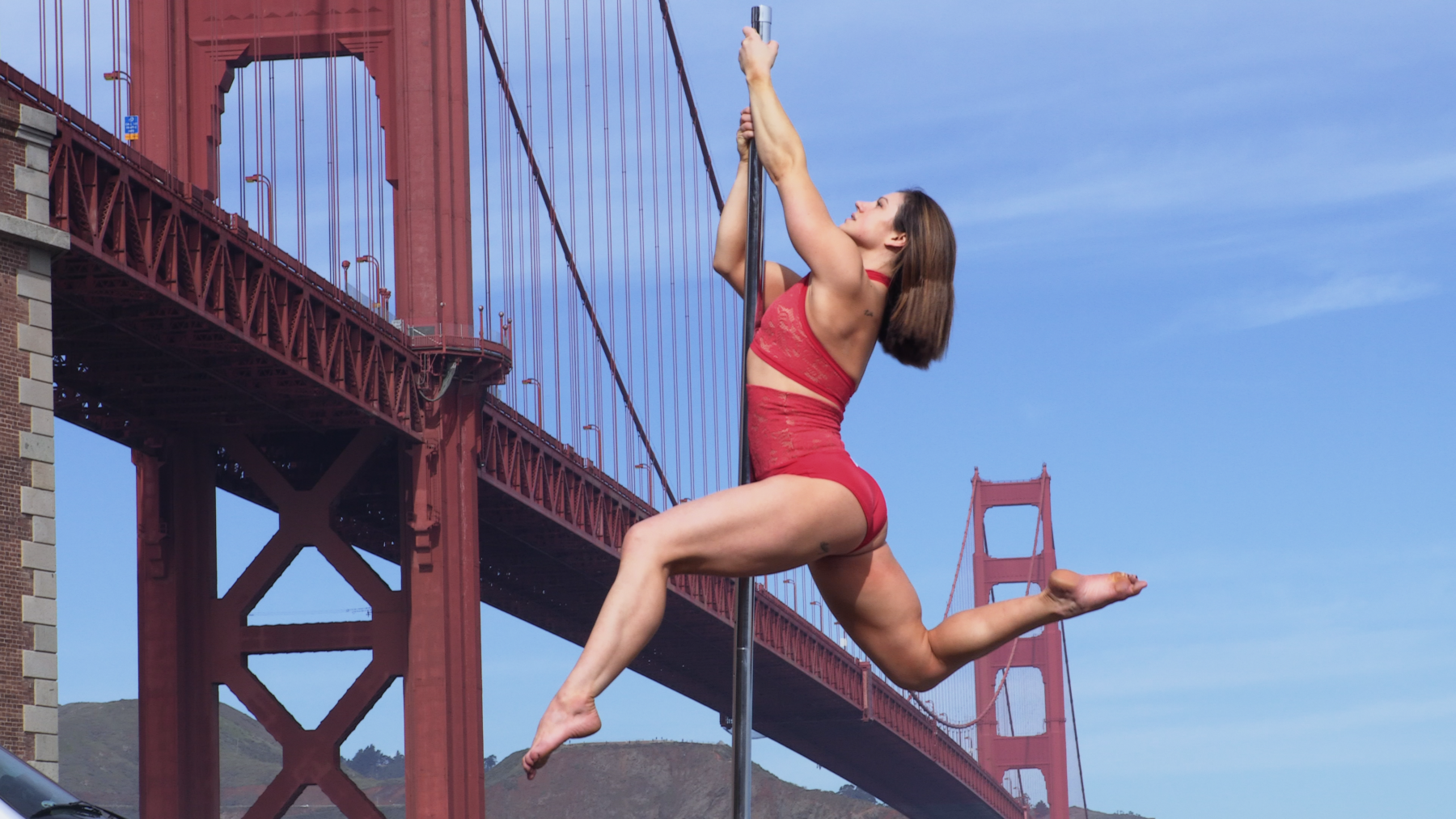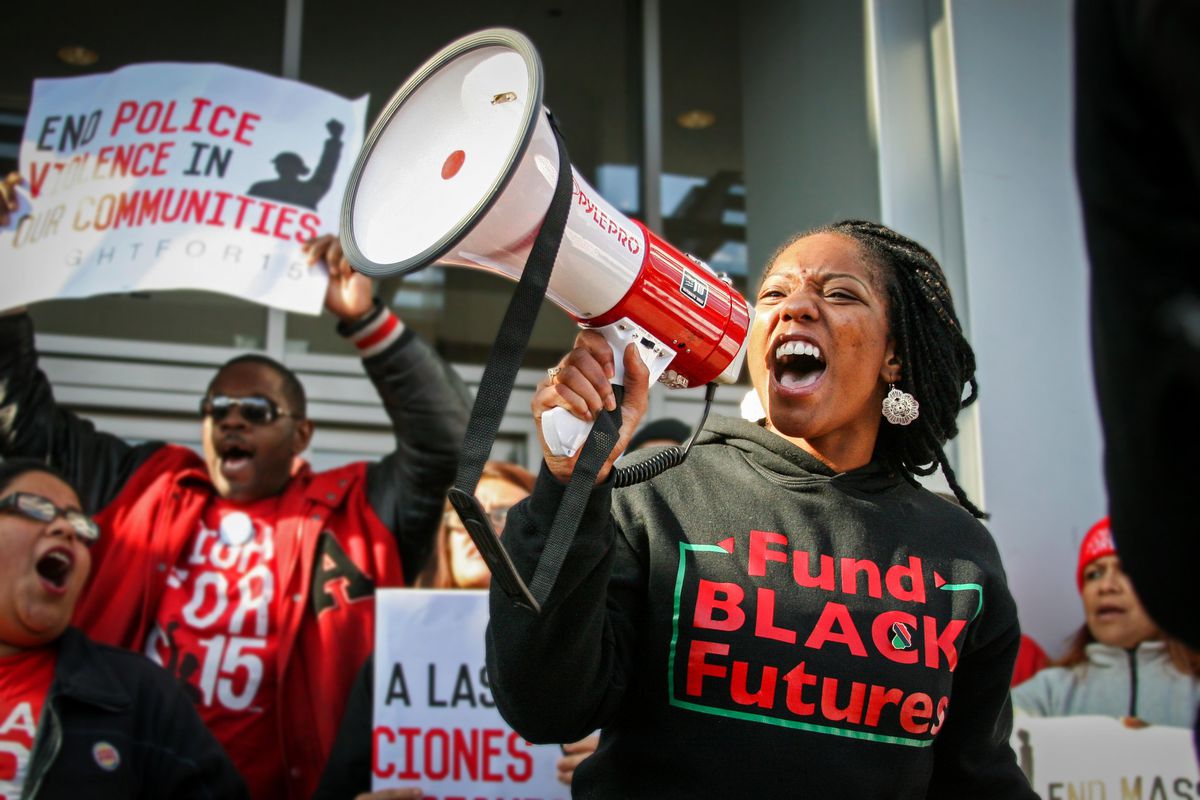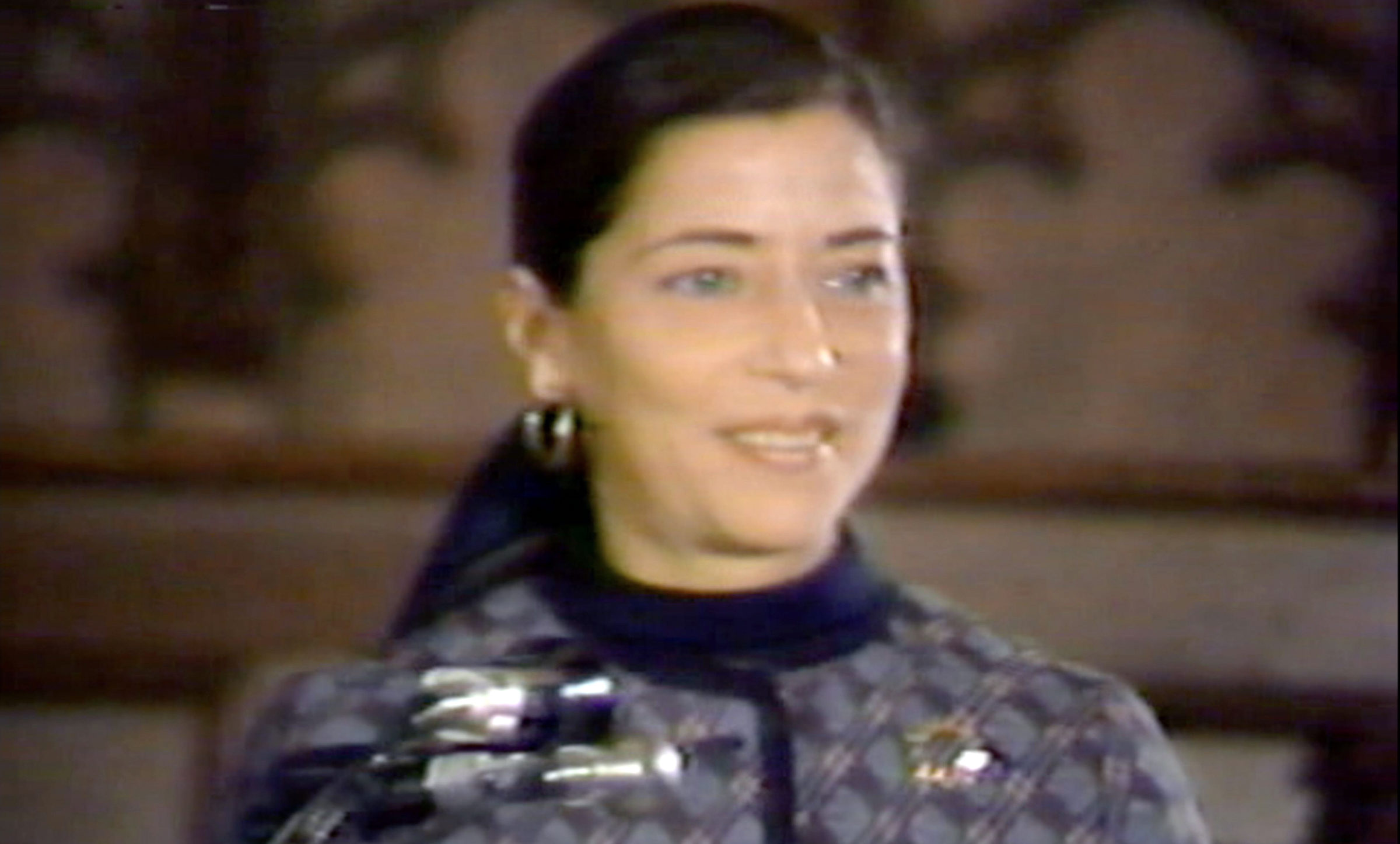Step inside “Fight Club for women” in the new Netflix original, Strip Down, Rise Up. The doc captures how the phenomenon of pole dancing is flourishing beyond the stages of strip clubs, where it is being adapted as a tool for women’s empowerment. While there are competitive and recreational schools that approach it as an art or sport, other classes resemble therapy sessions. Director Michèle Ohayon weaves a tapestry out of all of them, showing how the athletic artform has taken root outside of sex work as many attempt to divorce it from the male gaze and use it as a transformative tool for healing.
Ohayon’s introduction to the world of pole dancing began when her daughter invited her to attend a class. While that first encounter was at a “sketchy” studio in Studio City that had them giggling for hours, Ohayon was intrigued. She dug deeper and found herself in an introductory class at a studio that changed the way she thought about pole dancing. The seed of Strip Down, Rise Up grew from the windowless studio of S Factor, where Ohayon first heard the stories of her classmates and was surprised by their reasons for signing up.
“As I heard the stories from the other women, it was so emotional,” said Ohayon. “I realized how women want to move in a sensual way to reconnect with our bodies, not necessarily just to do pole tricks.”
The film begins with writhing bodies in the darkened basement of S Factor, the famed LA-based pole dancing studio headed by guru Sheila Kelley. Although the film spotlights other classes, the emotional intensity of Kelley’s classes steal the show. The star of the show is Evelyn Oshita, a participant in the class that the film treats with artistic affection. Oshita is a 50-year-old widow who has come to pole dancing classes to grieve and return to her body and sensuality.
The S Factor class is full of women like Oshita, who defy the imagined ideal of what a pole dancer looks like. A commonality among them is the desire to reinhabit and reclaim their bodies, many of which have been lost to sexual assault. Perhaps the most moving journey the film witnesses is that of Megan Halicek, a bright light in the class who reveals she was sexually abused by Larry Nassar, the serial abuser of hundreds of young gymnasts. S Factor offers an opportunity for women like Halicek to reclaim their bodies and sexuality in a safe space.
Gaining access to such a vulnerable environment was nearly impossible for Ohayon and her crew. At first, Kelley said no, insisting that none of the participants would want to be filmed in such a state. But Ohayon “kept knocking on the door,” and after months of building a relationship with the studio and its attendees, she got in. Ohayon and her all-female crew crammed into the corners of the tiny, dark studio and bore witness to a beginner’s class from start to finish, spanning over six months.
“It was all about trust. When I explained that the film is about women’s’ empowerment and how they reconnect with their bodies, they were on board,” said Ohayon.
“An interesting thing that happens when you have a camera in front of someone is it enhances their behaviour. It felt like they were on a mission to tell their stories to the world, as painful as they may be.”
S Factor is not for everyone. The film sees an early participant uncomfortably giggle through the immediate vulnerability of the first class and later drop out. She just wanted a workout. The film is wise in showing, then, how not all pole classes are like this. Most modern pole dancing classes are about physical movement – hold the group therapy session.
That doesn’t mean the stories behind these studios are devoid of emotional, healing journeys. Another standout character of the film is Amy Bond, who broke out of her Mormon upbringing and found herself working in porn in LA at a young age. After leaving porn and being taunted by men online and in person for years afterwards, Amy began a pole dancing studio where she was able to regain control of her own narrative and sexuality.
The film’s relationship to sex work and stripping mirrors that of the new wave of pole dancing: it’s complicated. The various studios in the film aim to break free of the stigma of pole dancing, fighting to remove it from the idea that it solely exists for the pleasure of a straight, male audience. Despite this, they attempt to pay due respect to its origins. The relationship between the two worlds of pole doesn’t appear to be fully reconciled.
“We all know that it originated with strippers, and the community is very grateful to strippers for creating this form,” said Ohayon. “Then they take it to another level, because it’s not necessarily about the male gaze but it’s about exploring the body and using it as a tool to explore your inner self.”
One key figure on the competitive side of the pole movement, Jenyne Butterfly, proudly began her story in a strip club, awestruck by the acrobatic stripper Pantera. She took up bartending in the same club and was taken under the stripper’s wing, kicking off a competitive career that led to places like Cirque Du Soleil. She represents pole dancing at the competitive level, where it becomes all about the physical form. At this level, pole dancing transcends gender and is not as exclusive to women.
“In S Factor you don’t even have to touch the pole, but in Jenyne Butterfly’s world and Amy Bond’s world, it’s all about the pole,” said Ohayon. “I found the dichotomy between those schools interesting, and I wanted to create a rich tapestry of the pole world.”
Strip Down, Rise Up is a moving introduction to the way pole dancing is evolving in America. Physical movement like dance has long been considered therapeutic, but case studies like S Factor show how powerful the sensual aspect of pole dancing can be in reclaiming one’s sexuality after it has been violated. The film is painfully vulnerable at times, but Ohayon’s empathetic lens urges the audience to sit with it.
“I always say I make films about people I love, while there are filmmakers who make films about people they hate,” she said. “The responsibility and integrity it takes to make a film about people you love, because they trust you so much, is enormous.”
Strip Down, Rise Up is now streaming on Netflix.











